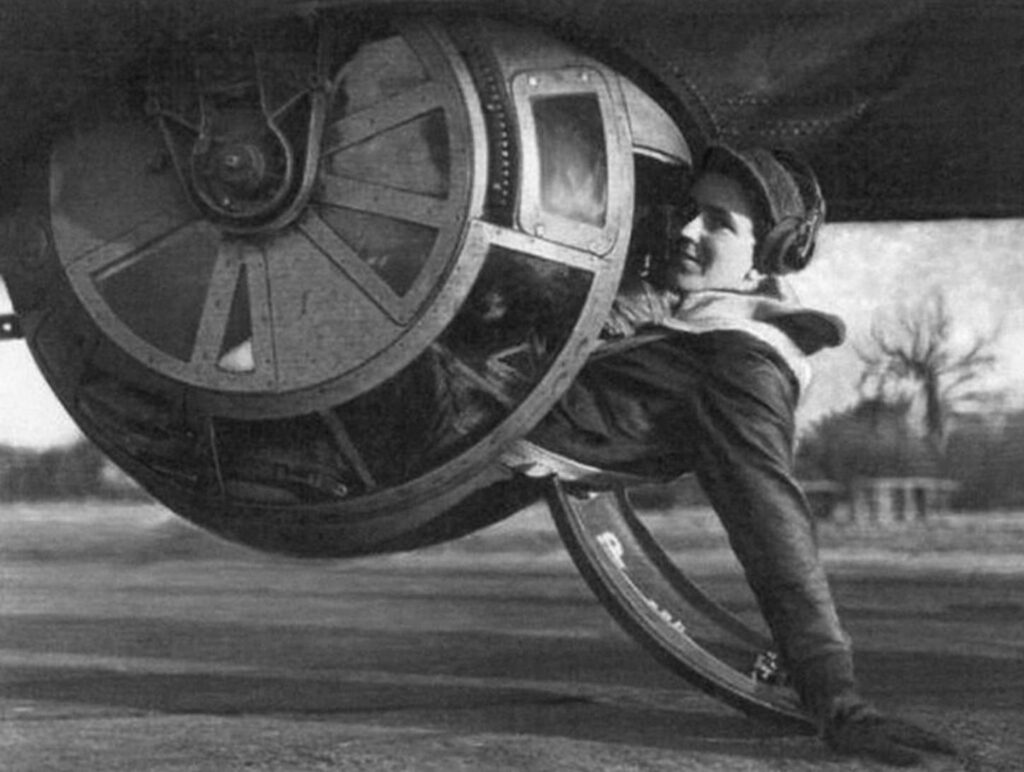
 |
| Albert Chaparro, US Army Air Corp, 1942 |
I’m currently in the middle of researching a new time-slip novel that will, in part, involve WWII. That means I’m immersing myself in the 1940s by watching movies and reading non-fiction as well as fiction about the war. And anytime I think about WWII, I think about my daddy.
I’m the proud daughter of a World War II veteran. Dad was a 20-year old young man when Pearl Harbor was attacked. Answering the call to arms, Dad joined the US Army Air Corp and became a Ball Turret Gunner on a B-17 bomber. He flew 50 missions over Europe, was awarded several medals, and taught gunnery instruction after returning to the states. Dad didn’t talk much about the war, but I think he’d be tickled that I’m writing a blog about Ball Turret Gunners. =)
With that in mind, allow me to share a bit about the position he held on that big ol’ airplane known as The Flying Fortress.
 |
| Boeing B-17 Flying Fortress, Wikipedia, Martin Cizek |
The Boeing B-17 Flying Fortress was a 4-engined heavy bomber developed in the 1930s for the United States Army Air Corp. Our country wasn’t at war at the time, but bitter memories of WWI were still fresh in the hearts and minds of our military leaders. The first flight of a B-17 took place on July 28, 1935.
One of the unique features of the B-17 bomber was the ball turret. Made of Plexiglas and about four feet in diameter, the ball turret was a sphere attached to the bottom of the airplane. Armed with two .50-caliber machine guns and capable of rotating 360 degrees, the ball turret’s gunner was responsible for protecting the otherwise-exposed underbelly of the flying fortress. By all accounts, the ball was very small and very cramped. Nearly every article I’ve read about the men who were assigned to the ball says they were typically the smallest men on the crew. While that may be true of most crews, my dad defied this description. He was thin and wiry to be sure, but according to his driver’s license he was 6’1″. Perhaps the other crew members were bigger men, but Dad wasn’t small.

When it came time to climb into the ball, the gunner opened the turret door on the floor of the airplane and positioned the ball with guns pointing straight down toward land. He then placed his feet into the heel rests and lowered himself into what can only be described as a fetal position–laying on his back with his knees bent up near his ears. Strapped in, the gunner would close and lock the door, leaving him completely alone and utterly vulnerable to enemy fire. Because the ball was such a tight space, most gunners chose not to wear a parachute.
 |
| Gunner climbs into B-17 Sperry ball turret 8th AF |
Flak jackets and electrically heated flight suits provided some relief from the bitterly cold, sub-zero temperatures, but the uninsulated ball kept the gunner’s hands and feet numb. Which was not ideal, considering all four extremities had jobs to do.
Two joysticks pivoted the ball around and around, up and down. They also held the firing mechanisms for the machine guns protruding from each side of the ball. On the floor of the ball, one foot rested on a pedal that controlled the gun sight, which hung suspended between his legs, and the other foot’s pedal ran his intercom – the only communication he had with the rest of his crew back inside the fortress.
 |
| B-17 bombers flying in formation (U.S. Air Force photo) |
The one thing that made the gunner feel less lonely in these long missions was the view. He had only to look side to side to remind himself he wasn’t alone. The skies were filled with fellow allied planes, bombers, and escorts, all accompanying each other to their destination. There’s no question the position of ball turret gunner was a dangerous one, but there’s debate on whether or not it was the most dangerous. A casualty survey for the 8th Air Force reports that the ball turret had the lowest fatality rate of any gunner, but other statistics insist the ball turret had double the mortality rate of the rest of the B-17 crew.